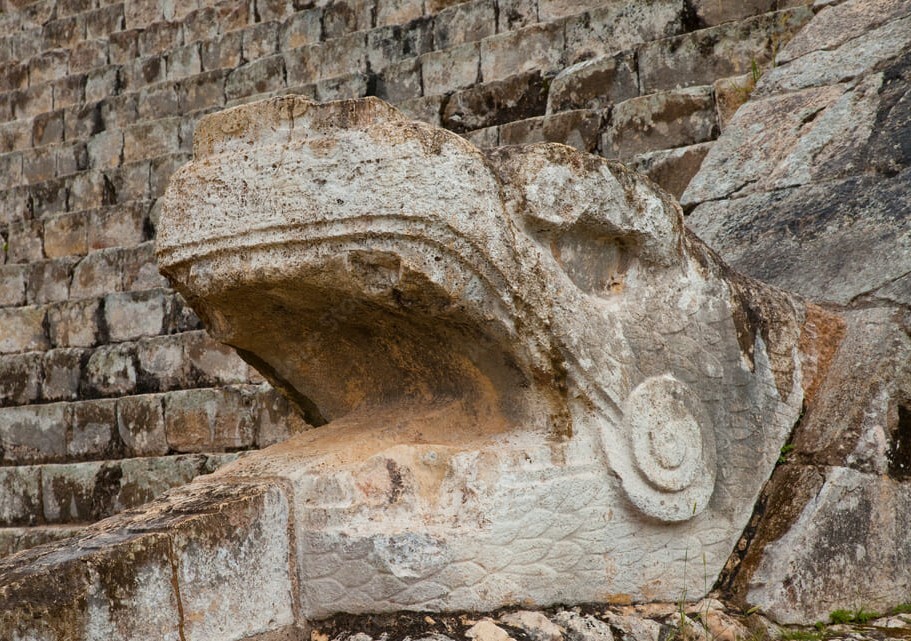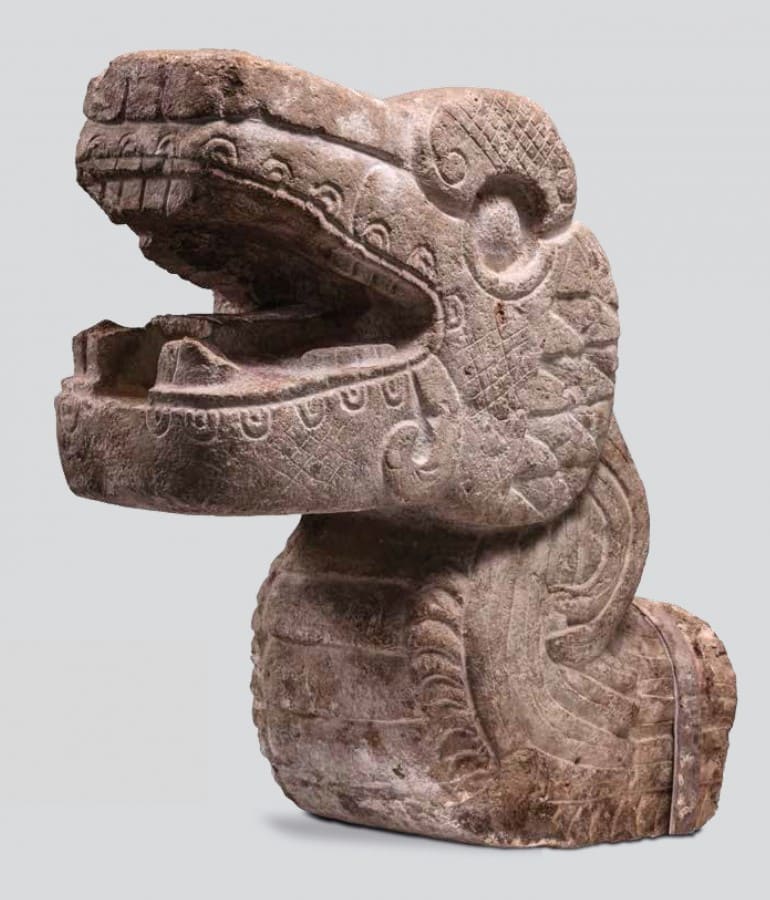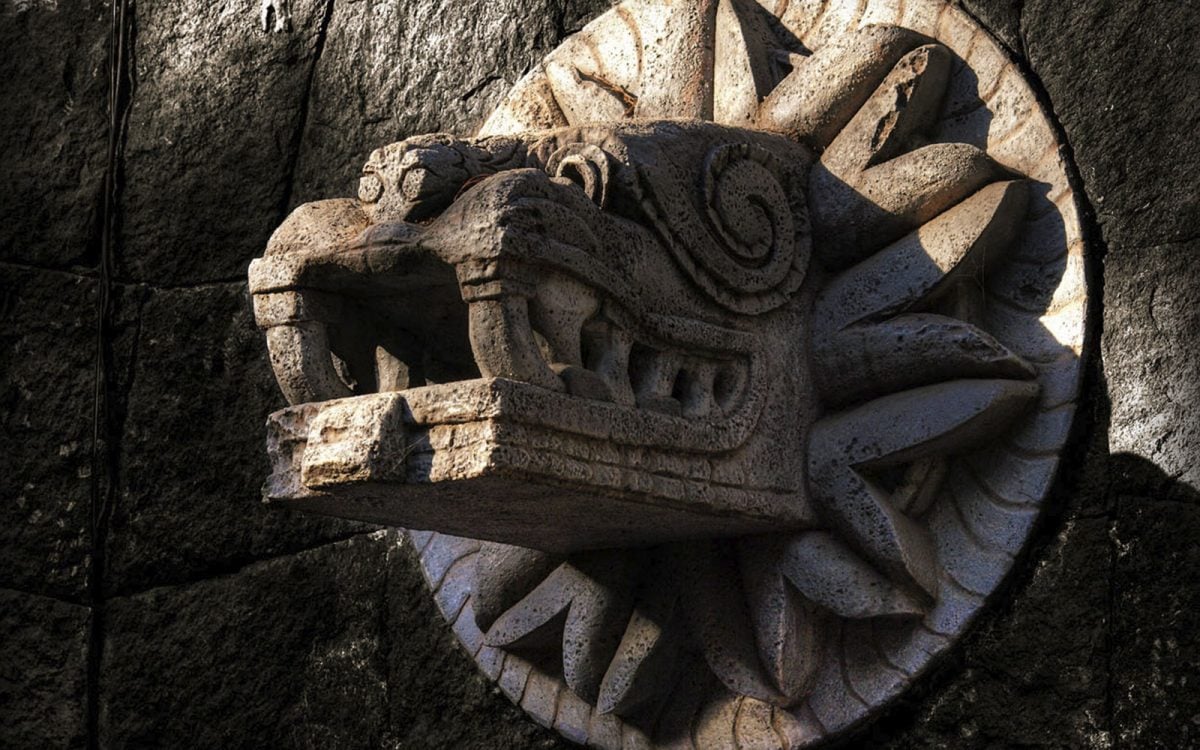
The Feathered Serpent is one of the most iconic and mysterious figures in ancient Mesoamerican cultures, particularly in Mayan and Aztec civilizations. Known as Kukulkan to the Maya and Quetzalcoatl to the Aztecs, this powerful deity symbolizes both divine and earthly forces, blending the strength of the serpent with the beauty and majesty of the bird. Twice a year, during the equinoxes, this ancient symbol comes to life at Chichen Itzá, where the shadow of the Mayan Feathered Snake can be seen descending the steps of the pyramid of Kukulkan, marking a breathtaking connection between human architecture and the cosmos.
With the fall equinox fast approaching, it’s the perfect time to explore the significance of the Feathered Serpent for both the Maya and the Aztecs, why it was so important, and how this ancient figure connects both civilizations.

For the Maya, Kukulkan, the Mayan Feathered Snake, was a god of wind, rain, and storms, closely associated with the creation of the world and the cyclical nature of time. He was revered as a mediator between the heavens and the earth, representing the duality of life. The serpent, which crawls on the ground, symbolized the earth, while the feathers symbolized the sky, embodying Kukulkan’s ability to transcend both worlds. This duality reflects the Mayan understanding of balance and harmony in the universe.
The pyramid of Kukulkan at Chichen Itzá was built as a testament to the god’s importance and his connection to celestial events. This architectural marvel was not just a ceremonial center but also a precise calendar that tracked the movements of the sun, particularly during the equinoxes.
One of the most captivating phenomena associated with the Mayan Feathered Snake occurs during the spring and autumn equinoxes. On these two days, the pyramid of Kukulkan at Chichen Itzá is perfectly aligned with the sun’s position. As the sun sets, a play of light and shadow creates the illusion of a serpent slithering down the northern staircase of the pyramid.
This visual effect, known as the "Descent of the Serpent," draws thousands of visitors every year who come to witness the power and precision of Mayan astronomy. The snake appears to descend from the sky, a clear representation of Kukulkan’s role as a bridge between the heavens and the earth. This event not only demonstrates the Mayans’ deep understanding of the solar calendar but also underscores the importance of the Feathered Serpent as a central figure in their religion and worldview.
For the Maya, Kukulkan was a deity of transformation, much like the serpent sheds its skin. The Mayan Feathered Snake represented renewal, rebirth, and the cyclical nature of time—a crucial concept in Mayan culture. Time was not linear for the Maya, but cyclical, repeating in a series of ages or “baktuns.” The Feathered Serpent embodied this eternal cycle of death and rebirth, making it one of the most powerful symbols in Mayan mythology.
Furthermore, Kukulkan was associated with rulership and authority. Kings and priests often depicted themselves as connected to Kukulkan, legitimizing their rule through this divine association. His presence during the equinoxes, when he "descended" from the heavens, reinforced the Mayan belief that their leaders were divinely appointed to maintain balance in the universe.
 The Feathered Serpent also played a significant role in Aztec culture, where he was known as Quetzalcoatl. Like Kukulkan, Quetzalcoatl represented a fusion of earth and sky, embodied by the serpent and feathers. However, the Aztec version of the Feathered Serpent was more explicitly tied to wisdom, learning, and creation.
The Feathered Serpent also played a significant role in Aztec culture, where he was known as Quetzalcoatl. Like Kukulkan, Quetzalcoatl represented a fusion of earth and sky, embodied by the serpent and feathers. However, the Aztec version of the Feathered Serpent was more explicitly tied to wisdom, learning, and creation.
Quetzalcoatl was seen as a god of knowledge, culture, and the morning star, associated with the planet Venus. He was also considered one of the creators of humanity, responsible for bringing civilization and enlightenment to the world. While Kukulkan was a god of cycles and transformation, Quetzalcoatl had a more intellectual and creative role in Aztec mythology.
Both the Mayan Feathered Snake and Quetzalcoatl share many similarities, which suggest a deep cultural exchange between the Maya and the Aztecs. Both deities symbolize the union of earth and sky, and both play key roles in the creation myths of their respective cultures. They were revered not only as gods of the natural world but also as patrons of civilization, learning, and order.
Additionally, both deities were associated with leadership and authority. Aztec rulers often claimed to be descendants of Quetzalcoatl, much like Mayan rulers associated themselves with Kukulkan. In both cultures, the Feathered Serpent legitimized the power of the elite, connecting earthly rulers with divine mandate.
While the Feathered Serpent figures in both Mayan and Aztec cultures share many similarities, there are also notable differences. For the Maya, Kukulkan was primarily associated with the elements—wind, rain, and storms—whereas Quetzalcoatl was more directly connected to knowledge, learning, and the cosmos. This distinction reflects the different priorities and focuses of the two civilizations.
The Maya’s emphasis on Kukulkan as a god of renewal and cyclical time also differs from the Aztec view of Quetzalcoatl as a more static figure of enlightenment and wisdom. Furthermore, while the Mayan Kukulkan had a clear, visible presence in the architecture of Chichen Itzá, Quetzalcoatl was more mythological and less tied to specific rituals like the equinox phenomenon at Chichen Itzá.
As the fall equinox approaches, the Mayan Feathered Snake will once again descend the pyramid at Chichen Itzá. For those who are fortunate enough to witness it, this event is a powerful reminder of the Mayans’ deep connection to the cosmos and the enduring importance of the Feathered Serpent in their culture. It’s a time to reflect on the cycles of nature, the passage of time, and the wisdom of the ancients.
Whether you’re a history enthusiast, a spiritual seeker, or simply a curious traveler, witnessing the descent of Kukulkan is an unforgettable experience that brings you face-to-face with the mystery and majesty of ancient Mesoamerica.